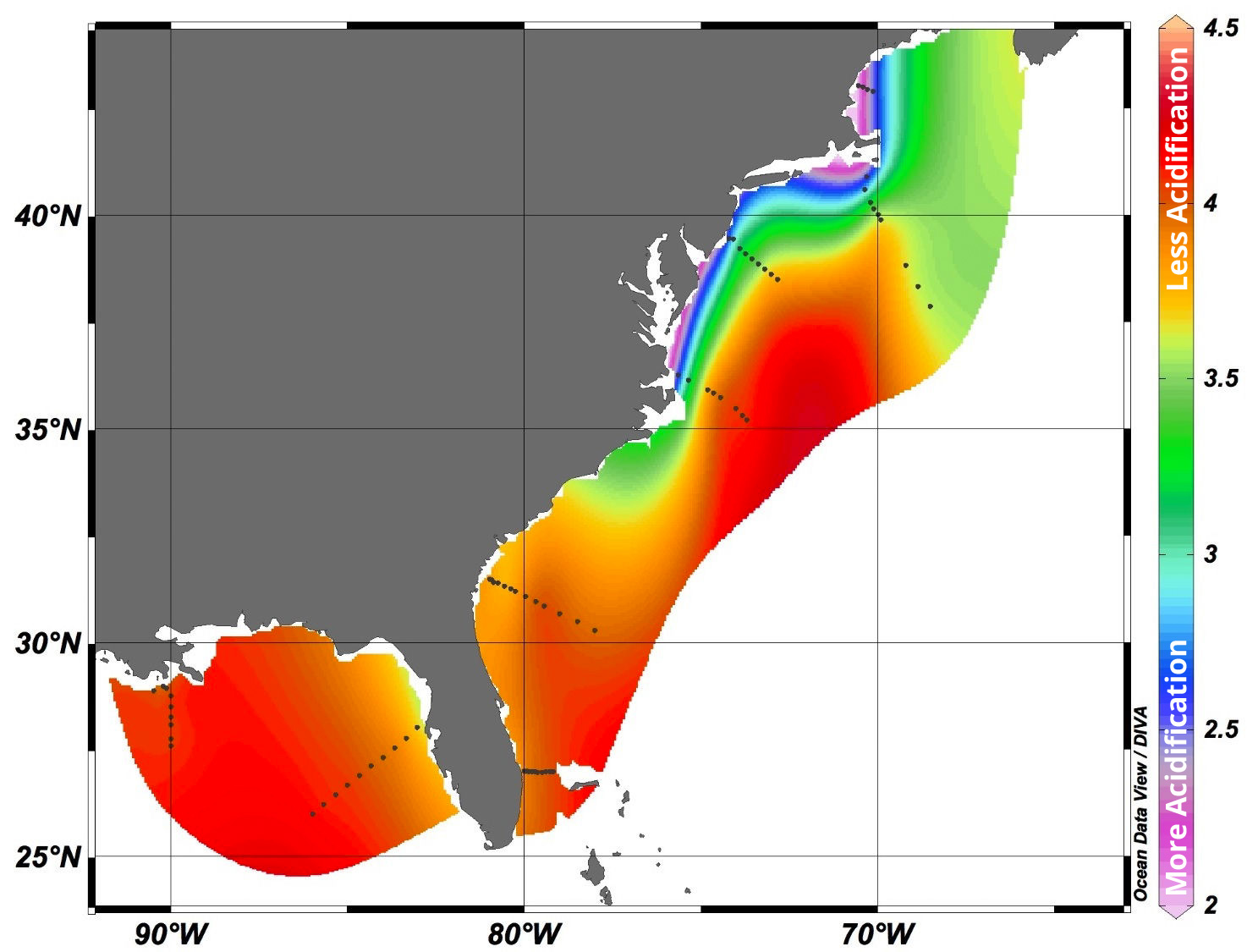Ocean Ecosystem and Resources : Status, Trends, and Linkages
Ocean Acidification
The oceans have absorbed about 28 percent of the carbon dioxide produced by humans globally over the last 250 years (Sabine et al. 2004). This increased carbon dioxide makes the oceans more acidic (reduces the pH), and carbon dioxide emissions are still rising. Globally, pH has declined about 0.1 pH units, or an increase in acidity of about 30 percent (Feely et al. 2009).
Acidification will influence all areas of the ocean, including coastal environments and the deep sea. A broad range of marine organisms could be affected, and recent studies indicate that reductions in survival, calcification, growth, development, and abundance are possible (Kroeker et al. 2013). The most negatively impacted organisms will likely be calcified algae, corals, mollusks, and the larval stages of echinoderms (Kroeker et al. 2013). Coral settlement and mollusk larvae were found to be particularly sensitive to acidification (Kroeker et al. 2013). Crustaceans, fish, fleshy algae, seagrasses, and diatoms may be less affected or may even benefit from acidification (Kroeker et al. 2013).
In 2009, Congress passed the Federal Ocean Acidification Research and Monitoring (FOARAM) Act, which required an interagency working group to create a Strategic Plan for Federal Research and Monitoring of Ocean Acidification. Regional consortia focused on ocean acidification have been organized in New England (Northeast Coastal Acidification Network) and in the southeastern states (Southeast Ocean and Coastal Acidification Network). Organizations in the Mid-Atlantic are currently developing a comprehensive ocean acidification monitoring network.
NOAA is developing an observing system to better understand ocean acidification along the East and Gulf Coasts by measuring carbon dioxide (pCO2) concentrations and other ocean acidification parameters using both ships and stationary buoys. The observing system has the following elements:
- Surface water measurements using autonomous systems on six ships of opportunity (SOOP-CO2).
- Dedicated Gulf of Mexico and East Coast Carbon (GOMECC) cruises with surface and subsurface measurements on the NOAA ship Ronald H Brown. This will improve process level understanding of the controls on ocean acidification.
- Moorings with autonomous instruments to determine the rapid temporal changes and causes thereof.
- The continued development of the observing system with new instrumentation and protocols.
The Mid-Atlantic Regional Association Coastal Ocean Observing System (MARACOOS) links to programs that display and record real-time observations of surface pH. Other ocean acidification efforts in the region include a Maryland State Task Force that examined the impacts of acidification on Maryland waters and produced a report calling for monitoring, industry partnerships, and collaboration with federal agencies to address the threat.
Aragonite saturation state in surface water as an indicator of ocean acidification. Cool colors indicate more ocean acidification (lower aragonite saturation).. (Source: NOAA Gulf of Mexico and East Coast Carbon (GOMECC) cruises)
ROA Linkages
The following sections of the ROA are closely related to the Ocean Acidification section:
Learn more about the Mid-Atlantic Regional Council on the Ocean’s (MARCO) work on ocean and coastal acidification through co-coordination with Mid-Atlantic Coastal Acidification Network (MACAN)
Selected Sources of Further Information
Ocean Acidification Fact Sheet (NOAA Ocean Explorer)
Video: Ocean Acidification’s Impact on Oysters and Other Shellfish (NOAA)
Federal Ocean Acidification Research and Monitoring Act (NOAA)
NOAA Ocean Acidification Program
Northeast Coastal Acidification Network
Southeast Ocean and Coastal Acidification Network
Ocean Acidification: From Knowledge to Action (Washington State Blue Ribbon Panel on Ocean Acidification)

